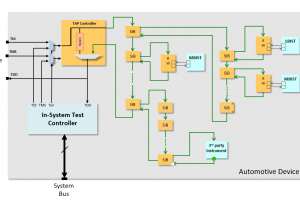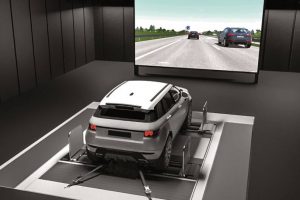
S32K3 MCUs are based on the Arm’s Cortex-M7 core in single, dual and lock-step configurations for ISO 26262 functional safety applications up to ASIL D.
Devices are offered in a range of flash memory sizes and pin-counts, and include the security and connectivity peripherals.
“Complementing this is a package of safety-compliant real-time driver software for Autosar and non-Autosar applications, and safety and multi-core communication framework software,” according to PLS.
As well as interactive debug, PLS provides visualisation options for application states in the UDE user-interface to add system analysis and testing of S32K3 MCUs.
“For MCUs with the dual-core configuration, debug functions such as multi-core run control for synchronous stop and start and multicore breakpoints are available,” said PLS. “The latter is very useful in applications with shared code.”
Debugging and run-time analysis of multi-core applications is performed in a single debug session and within a common debugger instance. The integrated Memtool provides flash memory programming functions.
Scripting is supported for automated debugging and testing. As Microsoft COM is the base technology for the UDE’s software API, developers can use their preferred scripting language including Python, Perl or JavaScript.
 UAD2pro, UAD2next (pictured) and UAD3+ Universal Access Device hardware accesses S32K3 via the Arm-specific Serial Wire Debug (SWD) interface. Program and data trace can also be captured using the Arm CoreSight Trace implementation.
UAD2pro, UAD2next (pictured) and UAD3+ Universal Access Device hardware accesses S32K3 via the Arm-specific Serial Wire Debug (SWD) interface. Program and data trace can also be captured using the Arm CoreSight Trace implementation.
UAD2next has 512Mbyte of internal trace memory for recording, while UAD3+ has up to 4Gbyte.
“With the help of recorded trace data, the UDE can perform a detailed analysis of the application’s run-time behaviour and provides, among other things, special functions for profiling and code coverage,” said PLS. “In addition, the data trace feature of the S32K3 MCU can be used for run-time and task analysis of real-time operating systems. For this purpose, UDE provides corresponding RTOS support add-ins. In addition to the presentation of operating system resources and objects, it also features a detailed visualisation of task execution over time.”
 Electronics Weekly Electronics Design & Components Tech News
Electronics Weekly Electronics Design & Components Tech News


